Dunolly Heritage Walk

Dunolly was first named in 1845, by the Scottish pioneer Archibald Campbell McDougall, who took up a sheep run in the district. He named his run after the Castle Dunolly in Scotland where he was born.
The Great Rush at Dunolly began in 1856, following strikes at Burnt Creek (Bromley) and Jones' Creek (10km north) and at The Old Lead (German Gully). An estimated 339 nuggets were found in the district, 126 on the Dunolly field itself.
At this time there was up to 50,000 diggers in this district and the main street, Broadway, was over 1.5km long.
On the 5th February 1869, 'The Welcome Stranger Nugget", the largest nugget ever found in the world, was discovered at Moliagul (10km north-east of Dunolly). The nugget was brought to Dunolly three days later. It was weighed and sold at the London Chartered Bank on Broadway, (see 9).
Dunolly Heritage Walk Map
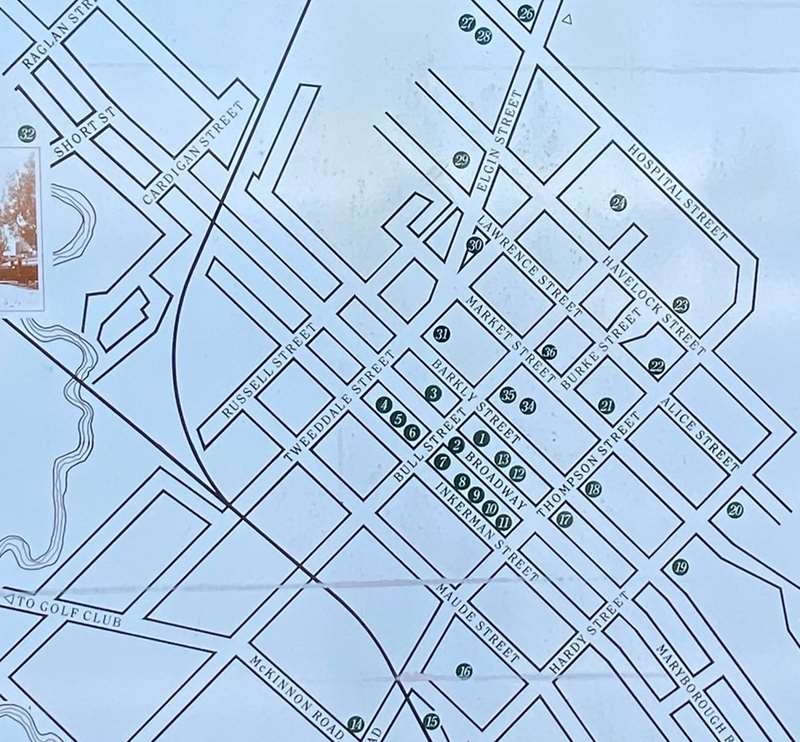
Dunolly Heritage Walk Locations
1. DUNOLLY POST OFFICE. 1890
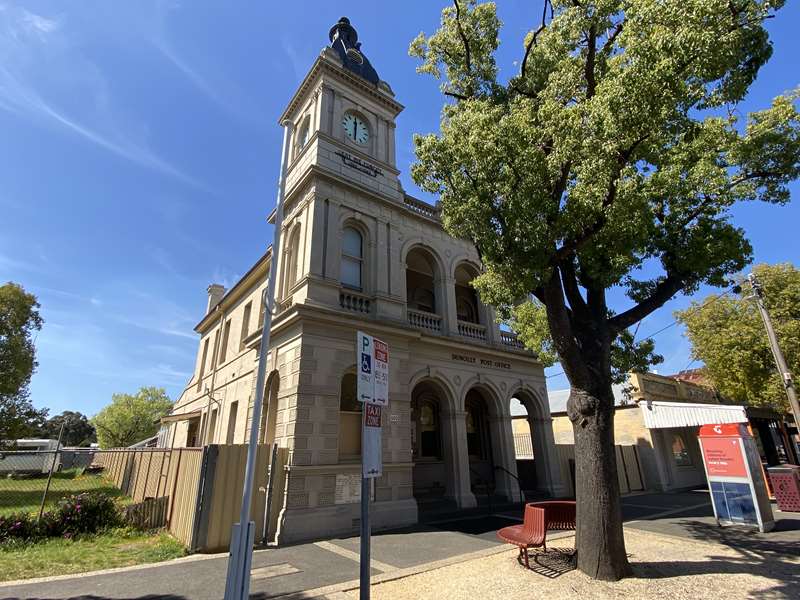
2. BROADWAY.
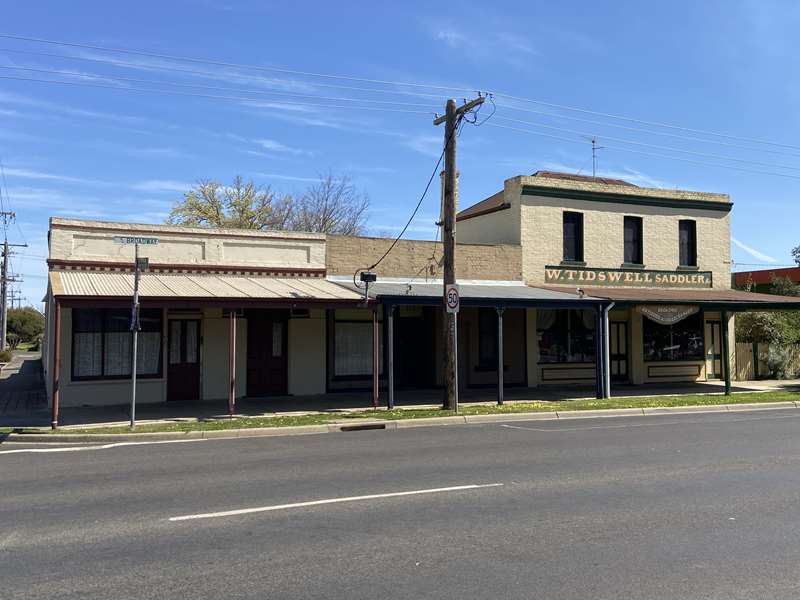
This aptly named roadway was once flanked by a tent and timbered township that stretched for over 1.5 kilometres. Many examples of the fine buildings dating from this period are still in use today.
Gold diggers rushed to Dunolly in 1856 and the new thoroughfare of Broadway ran for several miles through a canvas and timber settlement, at one stage home to 60,000 gold seekers.
By the 1860s banks like the London Chartered Bank, stores like that of Henry O'Brien Daly, run by the same family for more than 150 years, and Alfred Martin's ironmongery brought a dignified air to the once rowdy Broadway.
For Dunolly hadn't always been an orderly town. The bushranger Gypsy Smith's gang terrorised travellers in 1856-7. Mary Helena Fortune who was born in Belfast, Ireland in 1833, came to the goldfields with her father and sons, one of whom died in Dunolly in 1858. Mary remarried, was locked up for vagrancy and began a writing career as 'Waif Wander'. Her tales of goldfields life probably made her the world's first female detective-story writer. So popular were her stories that both a racehorse and a greyhound were named in her honour. Details of her own life remain, like her writing, mysteries. Along with thousands of miners who once made Broadway a street full of life, she wandered away and the date and place of her own death (perhaps 1910) remain uncertain.
3. BAKERY BUILDINGS. Both buildings date from the late 1850s.
4. IRONMONGERS. 1856. Peter McBride's private residence.
5. GLOVER'S GROCER SHOP. Built 1858.
6. Site of JULIUS VOGEL'S CHEMIST SHOP in 1857. Mr Vogel later became Prime Minister of New Zealand.
7. Site of OLD PUBLIC LIBRARY circa 1856. The State Bank now occupies this site. Old bricks from the demolished library have been used in its construction.
8. RAILWAY HOTEL.
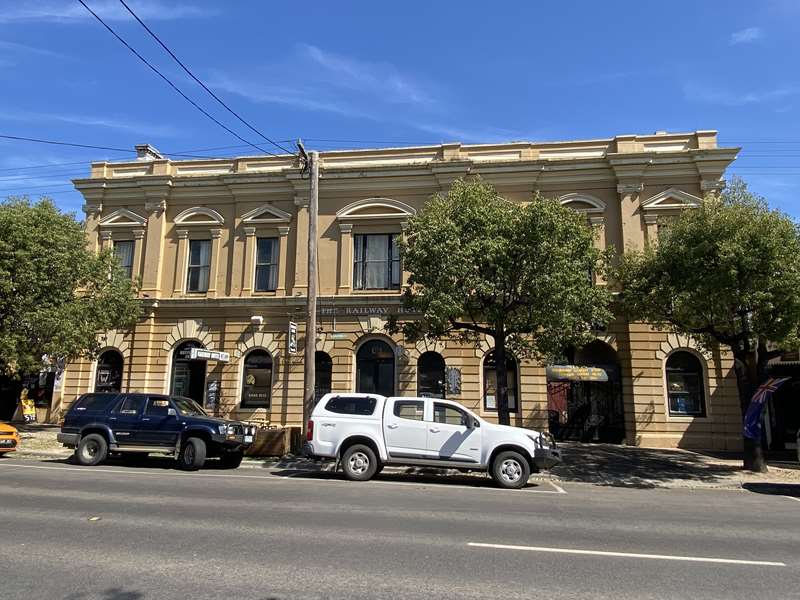
Built in 1858 by Ernest Ernsten. First known as The Criterion.
9. LONDON CHARTERED BANK. circa 1862. It was at this bank the 'Welcome Stranger Nugget' was weighed, and sold in February 1869.
10. DUNOLLY TOWN HALL.
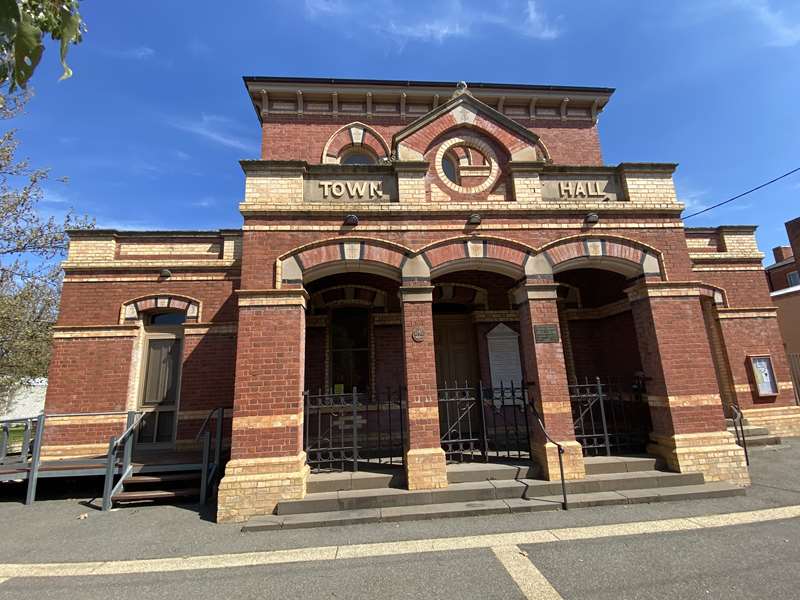
The Town Hall was originally built for use as a Court House. But in 1887, after a judge of the time complained of the acoustics, an exchange was made with the old Town Hall in Market Street.
Dunolly's first town hall, now known as the courthouse, was built in 1861-2 but was soon too small. The current town hall - originally built as the third courthouse -dates from 1884. In 1890, with judges tiring of noise from the street drowning out witnesses in court, it swapped roles with the older town hall. The town hall stands across the road from the former Bendigo Hotel, 1857-8, a Cobb and Co coach depot.
11. GOLDFIELDS HISTORICAL & ARTS SOCIETY MUSEUM.
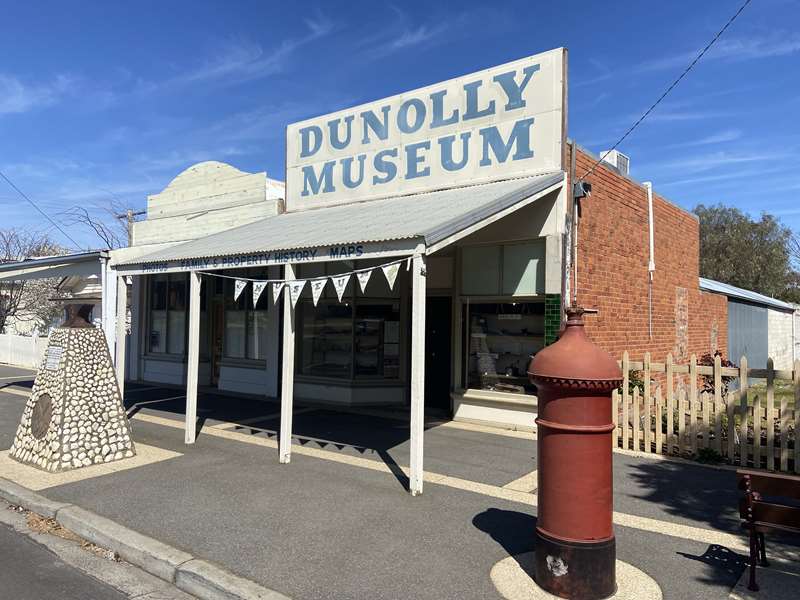
The 'Welcome Stranger Nugget' was broken up on The Anvil, which now stands proudly in front of the museum.
12. ROYAL HOTEL. Built 1869.
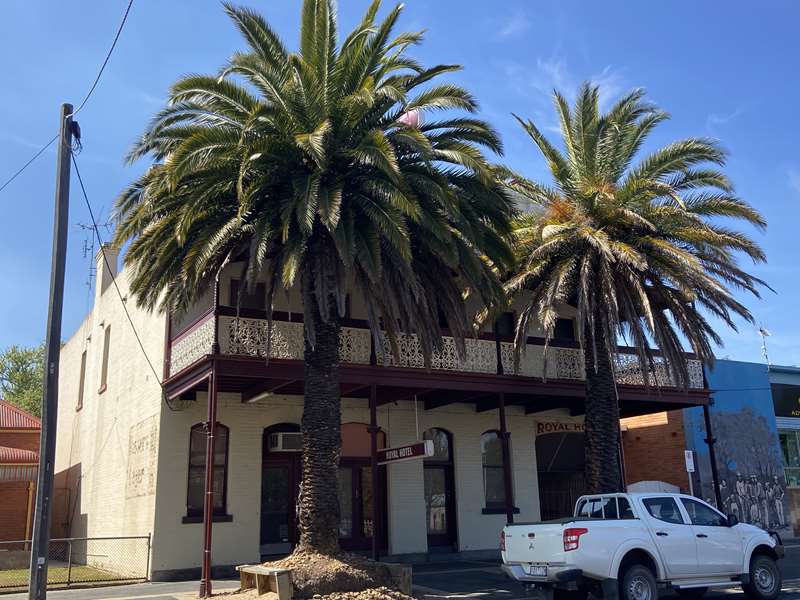
13. BENDIGO HOTEL.
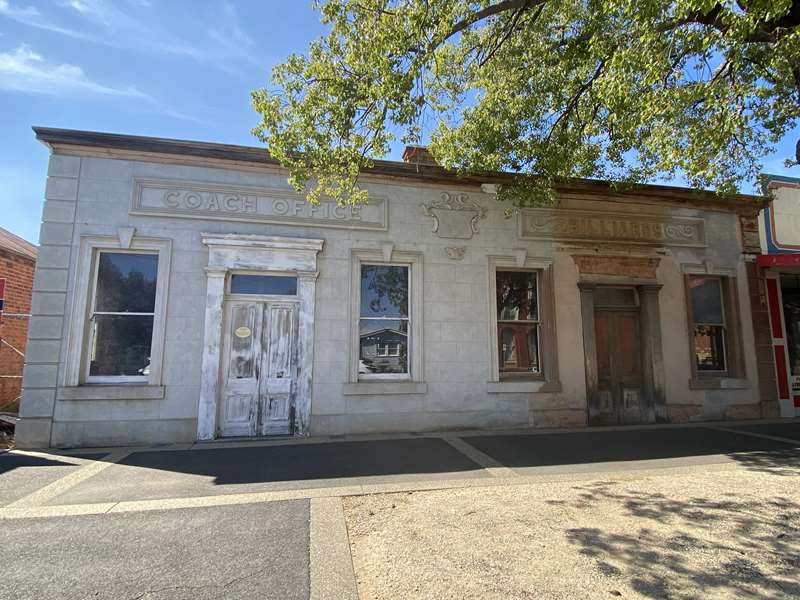
This hotel housed the Cobb & Co. Stables and Accommodation buildings. Both still stand at the rear of Daly's Store.
14. TERMINUS HOTEL.
15. DUNOLLY RAILWAY STATION. circa 1874.
16. DUNOLLY PROGRESS CARAVAN PARK.
17. SHIRE OF BET BET OFFICES. Built 1973. Extended 1988.
18. ANGLICAN CHURCH & COMMON SCHOOL.
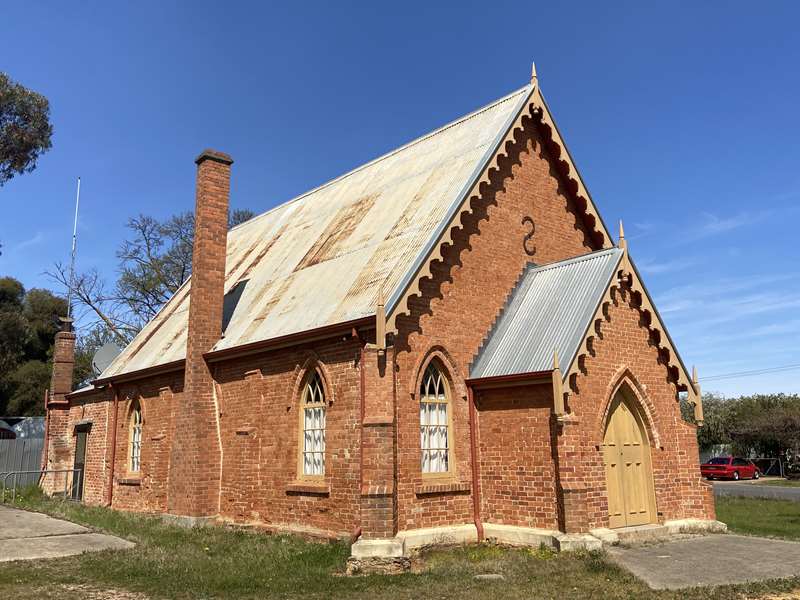
The foundation stone was laid for the Church in 1869, and the Pipe Organ installed later, in 1879. The Common School in St. John's Hall opened in 1857.
19. PRESBYTERIAN CHURCH & MANSE. 1874. Since The Uniting Church of Australia was established, the Church building has been used as the RS.L. HALL.
20. ST. MARY'S CATHOLIC CHURCH. The first services were held in a large canvas room at the 'PICK & SHOVEL HOTEL' between 1856 and 1858. Later, in 1861 a temporary wooden Chapel was constructed; and in 1871 the present Church was opened.
21. Old POST & TELEGRAPH OFFICE. Built 1872.
22. GOLD BUYERS HOUSE. 1859.
23. CHAUNCY HOUSE was built in 1859 as an Inn. It was later purchased by the District Surveyor Mr Phillip Chauncy, in 1861.
24. DUNOLLY DISTRICT HOSPITAL. Opened on 13.10.1869.
25. THE HERB FARM & STILL ROOM. Approximately 3km East of Dunolly.
26. DUNOLLY PRIMARY SCHOOL. circa 1874. Remodelled in 1912.
27. DALY'S WINERY. (circa 1860) once held the oldest established licence in the state. Over 40 types of wines were blended and bottled here.
28. CEMETERY. 1864.
29. DELEDIO PARK. Recreation Reserve.
30. SURVEYORS HOUSE. 1859.
31. METHODIST CHURCH. Sunday School & Manse. Opened in 1863.
32. HISTORIC CEMETERY. Dates from 1855.
33. DUNOLLY GOLF CLUB.
34. GORDON GARDENS. Named after General Gordon, Defender of Khartoum who died in 1885. Has bowling green, swimming pool, tennis / netball / basketball courts, Senior Citizens Centre and public toilets.
35. C.F.A. FIRE STATION. Built circa 1869. Rebuilt 1973.
36. DUNOLLY COURT HOUSE GOLD DISCOVERY INFORMATION CENTRE. The Court House was originally built as the Town Hall in 1857. In 1887 an exchange was made with the original Court House in Broadway. (See 10). The Court House was restored in 1989 and re- opened as The Goldfields Discovery Information Centre on the 19th March, 1990.
Location
102 Broadway, Dunolly 3472 Map









